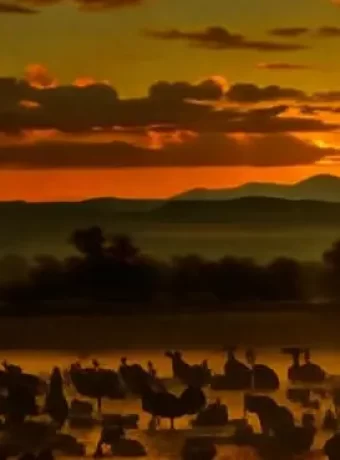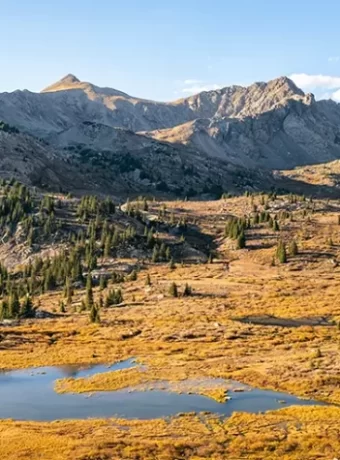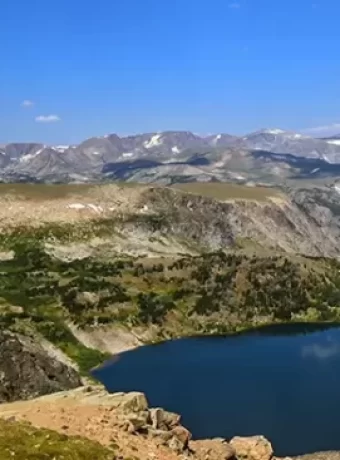History of Colorado Ghost Towns Vicksburg-Winfield
Welcome to a journey through Colorado’s past, focusing on the captivating History of Colorado Ghost Towns Vicksburg-Winfield-Rockdale-and Beaver City. These places, nestled in scenic Clear Creek Canyon, whisper tales of ambition, rapid growth, and equally quick departures. Once, these mining camps pulsed with life as prospectors entered the Clear Creek area, chasing golden dreams while merchants supplied their needs from bustling general stores. I spent several 3 day and 4 day weekends in Clear Creek Canyon Area.
Now, they stand as quiet yet powerful reminders of a wilder, foundational period in Colorado’s silver boom and early mining history. However, this historic canyon offers more than just decaying buildings and memories. The area boasts amazing hiking trails that follow routes once trod by early miners and offers prime spots for fly fishing in the shadow of towering peaks and near the Clear Creek Reservoir.
You will also find other special destinations nearby, from additional historical sites to stunning natural landscapes along the Arkansas River valley. So, prepare for an exploration of these fascinating ghost towns and the rich experiences Clear Creek Canyon provides. This journey offers a glimpse into the heart of Colorado’s mining legacy.
Table of Contents

Text content
Vicksburg: Where Burros Struck Gold
Our historical exploration begins with Vicksburg, a ghost town tucked away with a founding story as charming as the surrounding scenery. Legend has it that in 1867, a group of prospectors traveling from Leadville made camp in Clear Creek Canyon. Their pack burros, essential for carrying mining equipment, wandered off along the creek bed during the night.
When the miners located their animals the next morning, they discovered more than just their wayward burros; gold nuggets glinted in the clear waters of the creek. This serendipitous discovery marked the birth of Vicksburg. The town quickly grew as word of the strike spread, attracting eager individuals looking to make their fortune during the Colorado gold rush.
During its peak Vicksburg, the population swelled to approximately 600 to 700 residents. This made Vicksburg a lively and significant mining camp. Its main street bustled with activity, featuring essential services like a post office and a school, ensuring communication and education for the families who settled there. A blacksmith’s hammer rang out, shaping tools and shoeing horses, while two hotels offered lodging to newcomers and visitors. For entertainment and socializing after long mining days, Vicksburg boasted two billiard halls and several saloons. A well-stocked general store provided necessary supplies, and a professional assay office was on hand to test the purity and value of the prospectors’ ore. A delivery stable and a livery stable cared for horses, crucial for transportation and hauling ore. Furthermore, a stagecoach made a daily trip from Granite, connecting Vicksburg to the wider world and bringing in mail, supplies, and new arrivals. This consistent link helped sustain the town’s vibrant atmosphere. Some residents lived in boarding house arrangements, common in booming mining towns.
However, the prosperity driven by easily accessible gold was not destined to last indefinitely. By the early 1900s, the rich gold deposits began to thin out, making mining less profitable. As the gold diminished, so did the population; people started to leave Vicksburg, seeking opportunities elsewhere. Gradually, the once-thriving community dwindled, and Vicksburg transitioned into a ghost town. Today, it stands as one of Colorado’s best-preserved ghost towns, largely due to the diligent efforts of organizations like the Chaffee County Historical Society. They operate the Vicksburg museum, also known as the Vicksburg cabin museum, which offers visitors a window into the past. This public museum is often open during summer months. Many original cabins still stand along what was once the town’s main thoroughfare, some of which are privately owned and occasionally used, though not continually occupied year-round. These efforts help preserve the legacy of peak Vicksburg.
Winfield: Silver Stories and a Schoolhouse Legacy
Next on our historical tour is Winfield, another significant ghost town located further up Clear Creek Canyon. Before adopting its final name, Winfield was known first as Florence and then briefly as Lucknow. In 1881, the settlement was officially named Winfield, and it became synonymous with the silver boom that swept through this part of Chaffee County.
The promise of rich silver veins drew a large influx of people to the area. By 1890, Winfield’s population peaked at around 1,500 residents, making it a substantial and bustling community. Life in Winfield revolved around the extraction and processing of silver ore, transforming the quiet canyon into a hub of activity.
Reflecting its size and the nature of a mining camp, Winfield featured three saloons to quench the thirst of hardworking miners. Two hotels provided accommodation for travelers, new arrivals, and mining speculators. A post office facilitated communication, a church tended to the spiritual needs of the community, and a dedicated school educated the children of the miners and merchants. During its heyday, Winfield was a pivotal center for silver mining in the region; for those chasing fortunes from silver, the Winfield ghost town, then a thriving settlement, was a prime destination. The town also had a delivery stable to support its commercial activities. Several original cabins still stand, testament to the hardy individuals who built this town.
Today, the Winfield town site is much quieter, a serene ghost town that invites reflection on its vibrant past. Several original buildings remain, offering tangible connections to its mining days. The old schoolhouse has been thoughtfully preserved and now functions as a school museum. This museum, typically open during the summer months, allows visitors to view historical mining tools, photographs, and exhibits that tell the stories of Winfield’s boom and subsequent decline. The town site itself serves as a starting point for several pleasant hikes. A short, contemplative walk from the main Winfield area leads to the historic Winfield Cemetery, where weathered wooden markers share silent narratives of the early residents who lived and died during the silver rush. Exploring the few buildings that remain provides a palpable sense of history. Winfield is listed on the National Register of Historic Places, recognizing its significance in Colorado’s early mining history.
Rockdale: Cabins, Calm, and an Old Fish Hatchery
Our journey continues to Rockdale, also known historically as the Crescent Mining Camp. Rockdale was one of the smaller towns in Clear Creek Canyon, less populous than its neighbors Vicksburg and Winfield, but it shared in the silver excitement that characterized the region during the late 19th century. This smaller mining camp offers a different perspective on life during the boom.
A few original log cabins are still standing in Rockdale, remarkably preserved examples of the rustic dwellings miners inhabited. These structures provide a genuine feel for the simple, often harsh, living conditions faced by those who sought their fortunes in the mountains. For an immersive experience, the U.S. Forest Service sometimes rents out some of these historic cabins during the summer months. Prospective renters should be aware that these accommodations are basic, lacking modern amenities like running water or electricity, offering instead a quiet retreat into nature and history. Access to Rockdale and other sites in the canyon is often via a county road, specifically County Road 390, which winds through this historic area. The Crescent Mining operations here were smaller scale compared to larger mines, but still contributed to the area’s output.
Beyond its preserved cabins and mining history, Rockdale presents another interesting feature: an old fish hatchery. Built in 1884, this historic hatchery sits near Clohesy Lake. It was one of the earliest fish propagation facilities in Colorado, established with the aim of stocking mountain streams and lakes with fish, supporting both recreational fishing and ecological balance. Rockdale, therefore, offers a unique blend of mining history and early conservation efforts. It is a tranquil spot that reveals a different dimension of life in Clear Creek Canyon, demonstrating that not all endeavors were solely focused on mineral extraction; some residents were also looking towards the sustainable future of the area’s rich natural resources. It stands as a reminder of the varied activities that shaped these mountain communities.
Beaver City: The Brief Life of an Early Camp
Our tour of historical sites in Clear Creek Canyon must include Beaver City. This settlement holds the distinction of being the very first mining camp to emerge in this particular canyon. Beaver City appeared on the scene in the 1880s, preceding the establishment of its more famous neighbors like Vicksburg and Winfield.
Despite its early start, Beaver City never achieved the size or prominence of the other camps in the canyon. It remained a relatively small settlement throughout its existence. Historical records suggest it likely consisted of only a few basic structures, perhaps a main cabin serving as a store or communal space, and a few sheds for storing supplies and mining tools. Information about Beaver City is scarcer compared to the more extensively documented histories of the larger towns.
Today, exceedingly little remains of Beaver City. Only a couple of crumbling log structures or foundation remnants hint at where the camp once stood. This makes Beaver City the most “ghostly” of the ghost towns within this part of the canyon, its physical presence almost entirely reclaimed by nature. There are no grand buildings or preserved museums here, only the faint, lingering echo of what was once a hopeful, pioneering beginning. Visitors exploring Clear Creek Canyon might easily pass by its site, perhaps marked only by a subtle sign or a mention in a guidebook. Nevertheless, Beaver City represents the raw, nascent stage of the mining boom that would eventually transform this specific river valley. Many such small mining camps appeared and disappeared rapidly across the Colorado frontier, their brief existence a testament to the speculative and often fleeting nature of early mining ventures. This ghost town tucked away offers a subtle reminder of those ephemeral dreams.
Hiking Trails: Ghostly Paths to Mountain Highs
After immersing ourselves in history, it’s time to consider the numerous outdoor activities available in Clear Creek Canyon. The canyon and the surrounding Pike and San Isabel National Forests offer an extensive network of amazing hiking trails. These paths cater to all ability levels, from easy riverside walks suitable for families to challenging alpine climbs that will test the endurance of seasoned hikers.
One very popular and historically significant trail is the Inter-Laken Trail. This is a 4.7-mile out-and-back route that meanders along the picturesque shores of Twin Lakes. The trail leads to the site of the historic Inter-Laken resort, a luxurious vacation destination in the late 1800s. The remaining beautifully preserved buildings of the resort add another layer of historical interest to the hike. The views along this trail are consistently breathtaking, featuring stunning lake reflections of the surrounding majestic mountain peaks. The path includes some uneven sections, so sturdy footwear and careful footing are recommended. The south forks of local creeks often carve paths for these trails.
For a shorter, more reflective walk, the Winfield Cemetery trail offers an easy stroll from the main Winfield townsite. This path leads to the quiet, historic cemetery with its weathered wooden crosses, providing a peaceful spot for contemplation or a simple picnic. If you are looking for more strenuous hikes, consider the trails leading up towards the old mines that dot the mountainsides. For instance, several paths near Winfield head towards Sheep Mountain or La Plata Peak, offering ambitious routes for experienced hikers. The Swiss Boy Mine trail, also originating near Winfield, presents a steeper climb. This particular hike rewards determined individuals with incredible panoramic views and a chance to see remnants of one of the area’s early silver and copper mines, perhaps even an old tram drum or parts of an air compressor used in the mining days. Remember, old mine areas can be inherently unstable; always exercise caution, stay on marked paths, and never enter abandoned mine shafts or workings. Many of these trails follow paths originally blazed by early miners, connecting you directly to the area’s past as you traverse the landscape, sometimes along an old creek bed.
Fly Fishing: Casting Lines Where History Flows
Let’s now turn our attention to fly fishing, another popular activity in this historically rich and naturally beautiful region of Colorado. The waters here are a haven for various species of trout, attracting anglers from near and far. The Clear Creek Reservoir is a prime location for fishing, conveniently situated near the historic sites of Vicksburg and Winfield. This well-managed creek reservoir is regularly stocked with rainbow trout and brown trout, offering excellent opportunities for a successful day on the water. One can easily combine a morning exploring local history with an afternoon of rewarding fishing.
Twin Lakes, located near the historic Inter-Laken resort, also provides outstanding fishing opportunities. These large, natural lakes are renowned not only for their stunning scenic beauty but also for their robust fish populations. Anglers at Twin Lakes can expect to catch various types of trout, including the formidable mackinaw (lake trout). Kokanee salmon and even northern pike also inhabit these deep, clear waters. Twin Lakes is well-suited for fishing from the shore, and also accommodates small boats, kayaks, or float tubes, allowing access to different parts of the vast lakes. The expansive nature of Twin Lakes means there is typically plenty of room for everyone to find their own productive spot.
When preparing for a fishing trip to the Clear Creek Canyon area or the nearby Arkansas River, it is helpful to know which flies are effective. The local aquatic environment supports abundant insect life, with mayflies, caddisflies, and stoneflies being particularly common. Consequently, a diverse selection of fly patterns will serve you well. Many local anglers favor the Elk Hair Caddis, a dry fly that floats well and reliably attracts eager fish to the surface. The Parachute Adams is another excellent all-around dry fly choice, effective in various conditions. For subsurface fishing, the Pheasant Tail Nymph is a classic and often indispensable pattern. If you are uncertain about current conditions or which patterns are most productive, consider stopping by a local fly shop in nearby Buena Vista or Leadville. The staff at these shops can provide up-to-date fishing reports, offer valuable local tips, and recommend popular patterns that the fish are currently biting on. Their expertise can significantly improve your fishing experience in these historic waters.
More Canyon Discoveries: Beyond the Main Ghost Towns
The adventure in Clear Creek Canyon extends beyond the prominent ghost towns of Vicksburg and Winfield. There are other intriguing spots scattered throughout the canyon lies, each offering unique insights into the area’s past and natural beauty. The Crescent Mining Camp, closely associated with Rockdale, is one such place. As previously mentioned, it features several preserved cabins, providing a quieter, more intimate glimpse into the daily existence of a miner. Wandering among these rustic structures allows for a tangible connection to the early mining days, where one can almost imagine the sounds of pickaxes and the distant murmur of conversations from a bygone era.
The site of the Swiss Boy Mine, located near Winfield, is another compelling destination for those particularly interested in the details of mining history. The hike to the mine itself is part of the experience, offering rewarding views along the way. Once at the site, visitors might find remnants of old mining equipment, such as pieces of an air compressor or other machinery, and possibly the mine’s entrance. It is crucial to reiterate that exploring around old mine sites requires extreme caution. Abandoned shafts can be hidden by vegetation and are often unstable. Always observe any mining remnants from a safe distance and never attempt to enter old mine workings or tunnels. Some historic sites might even feature an old tram drum, a fascinating piece of mining technology.
Revisiting the Winfield Cemetery can also be a poignant and memorable experience. The simple, often hand-carved wooden crosses and the peaceful, secluded setting make it a powerful place for quiet reflection. It encourages contemplation about the hardships, hopes, and everyday lives of the individuals who lived, worked, and ultimately died in this remote mountain environment during the silver boom. Each of these lesser-known spots adds another layer of depth to your exploration of Clear Creek Canyon. They successfully combine rich history with the raw, untamed beauty of the Colorado mountains, fostering that exhilarating feeling of discovery that makes exploring such historical landscapes so rewarding. Remember always to practice Leave No Trace principles: take only pictures, leave only footprints. It’s disheartening to see aluminum cans scattered or other litter in such pristine and historical settings, so pack out everything you pack in to help keep these areas preserved for future generations. The efforts of various historical societies, like the Clear Creek Canyon Historical Society or the broader Chaffee County Historical Society, are vital in preserving these sites, often working with the Forest Service. Some sites are on the National Register of Historic Places, highlighting their importance.
Conclusion of Ghost Towns Vicksburg-Winfield
So concludes our extensive look into the History of Colorado Ghost Towns Vicksburg-Winfield-Rockdale-and Beaver City. A visit to Clear Creek Canyon, enriched by opportunities for fantastic hiking along historic trails, peaceful fly fishing in clear mountain waters, and discovering other special spots like the Crescent Mining Camp or the Fish Hatchery, truly offers a memorable and multifaceted trip. This region of Chaffee County beautifully captures the spirit of early mining in Colorado.
Whether your passion lies in unraveling historical narratives, immersing yourself in the great outdoors, or simply seeking an experience that deviates from the everyday, this particular slice of Colorado is well-equipped to deliver. The stories of prospectors who entered this canyon, the remnants of their mining camps, and the enduring presence of original cabins all contribute to a profound sense of connection with the past. When you visit these hallowed grounds and the Vicksburg museum or Winfield school museum, always approach with respect for the past and the delicate environment.
Tread lightly on the land, appreciate the efforts made to preserve these treasures, and perhaps, if you listen closely, you might just feel the lingering presence of those old miners still watching over their beloved mountains and the South Forks of the creeks. Enjoy your exploration of Colorado’s rich heritage, a journey that takes you through more than just locations, but through time itself. The Clear Creek Canyon historical legacy is a precious one.






